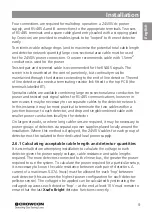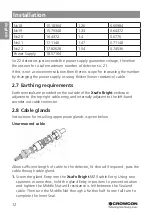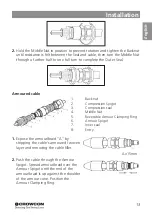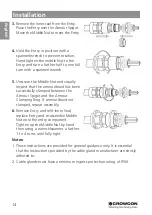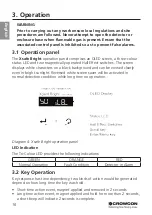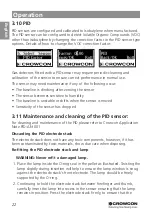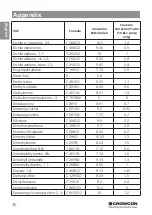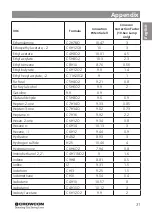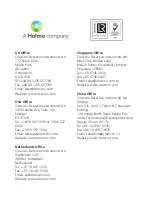
Operation
22
English
3.10 PID
PID sensors are configured and calibrated to Isobutylene when manufactured.
The PID sensor can be configured to detect Volatile Organic Compounds (VOC)
other than Isobutylene by changing the correction factor in the PID sensor type
options. Details of how to change the VOC correction factor:
Gas detectors fitted with a PID sensor may require periodic cleaning and
calibration of the sensor to
ensure correct performance in normal use.
The sensor may need maintenance if any of the following occur:
• The baseline is climbing after zeroing the sensor
• The sensor becomes sensitive to humidity
• The baseline is unstable or shifts when the sensor is moved
• Sensitivity of the sensor has dropped
3.11 Maintenance and cleaning of the PID sensor:
For cleaning and maintenance of the PID please refer to Crowcon Application
Note PID-AN-001.
Discarding the PID electrode stack
The electrode stack does not have any toxic components, however, if it has
been contaminated by toxic materials, show due care when disposing.
Re-fitting the PID electrode stack and lamp
WARNING: Never refit a damaged lamp.
1. Place the lamp inside the O-ring seal in the pellet as illustrated. Twisting the
lamp slightly during insertion will help to ensure the lamp window is snug
against the electrode stack’s front electrode. The lamp should be freely
supported by the O-ring.
2. Continuing to hold the electrode stack between forefinger and thumb,
carefully insert the lamp into recess in the sensor ensuring that the lamp
remains in position. Press the electrode stack firmly, to ensure that the


